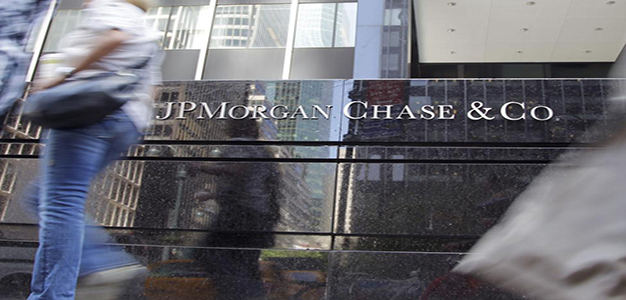
by Pam Martens and Russ Martens at Wall Street on Parade
Under just three of the emergency bailout programs offered by the Fed to Wall Street, units of the megabank JPMorgan Chase tapped over $6 trillion in cumulative (term-adjusted) loans from September 17, 2019 through the first quarter of 2020. That figure will definitely go higher as the Fed is releasing the names of the banks and the amounts they borrowed on a quarterly basis for its repo loan program.
Thus far, the numbers stack up as follows: a trading unit of JPMorgan Chase borrowed $6.19 trillion from the Fed’s repo loan program from September 17, 2019 through March 31, 2020. (Those are cumulative, term-adjusted figures.) A significant chunk of that money was borrowed at interest rates as low as 0.10 percent. The loans were collateralized with mostly treasury securities and agency mortgage-backed securities (MBS).
A trading unit of JPMorgan Chase also borrowed $400 billion in cumulative, term-adjusted loans from the Fed’s Primary Dealer Credit Facility (PDCF) during 2020. All of those loans were made at a fixed rate of 0.25 percent even though the Fed accepted lower-grade collateral, such as asset-backed securities, for some of the loans.
JPMorgan Chase’s money market funds also needed to borrow a cumulative $24.8 billion from the Fed’s Money Market Mutual Fund Liquidity Facility (MMLF) to bail themselves out during March and April of 2020. Some of those loans didn’t mature until 2021. JPMorgan borrowed from the Fed’s MMLF at rates between 0.50 and 1.25 percent.
While JPMorgan Chase, which has admitted to five criminal felony counts since 2014, was getting these sweetheart deals from the Fed, it was charging Americans who were struggling from the impact of the COVID-19 pandemic as much as 17 percent on their credit cards. You can read one of its credit card customer’s complaints about that 17 percent interest at this link at the Consumer Financial Protection Bureau’s (CFPB) complaint database.
Another JPMorgan Chase customer wrote to the CFPB that their employer filed for bankruptcy during the pandemic,…
Continue Reading